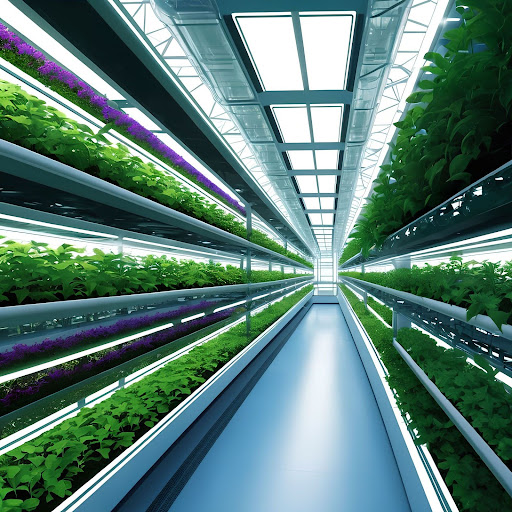Indoor agriculture is revolutionizing the way we grow food, allowing us to produce fresh produce year-round in any location. However, this innovation comes with its own set of challenges, primarily energy consumption. Fortunately, Energy Incentives and Green Rebates are spearheading the push towards sustainability in the indoor agriculture space. By encouraging the adoption of energy-efficient technologies, these programs are not only reducing energy consumption but also providing financial support to growers.
The Efficiency of Switching from HID to LED Lighting
Power Usage and KWh Saved with LED Lighting
One of the most significant advancements in indoor agriculture has been the switch from high-intensity discharge (HID) lighting to light-emitting diode (LED) lighting. LEDs offer numerous advantages over traditional HID lights. They are more energy-efficient, converting more electricity into usable light rather than heat. This efficiency translates into significant power savings. On average, LED lighting can reduce energy consumption by up to 60% compared to HID lighting.
For instance, if an indoor farm switches from 1,000-watt HID lights to 400-watt LEDs, it can save 600 watts per light fixture. In a facility with 100 light fixtures, this equates to a reduction of 60,000 watts, or 60 kWh per hour of operation. Over the course of a year, assuming 18 hours of light per day, this can result in savings of approximately 394,200 kWh. Such substantial energy savings not only reduce operational costs but also significantly lower the carbon footprint of the operation.
Reduced HVAC Needs with LED Lighting
In addition to direct energy savings, LEDs also contribute to reduced HVAC (heating, ventilation, and air conditioning) requirements. HID lights produce a considerable amount of heat, necessitating robust HVAC systems to maintain optimal growing conditions. In contrast, LEDs produce far less heat, reducing the need for extensive cooling systems. This reduction in HVAC usage further compounds the energy savings, making LED lighting an even more attractive option for indoor agriculture.
Financial Benefits of Energy Rebates
Providing Capital for Upgrades
One of the main barriers to adopting new technologies in indoor agriculture is the initial capital investment. Energy rebates play a crucial role in overcoming this obstacle. By providing financial incentives, these rebates help operators offset the costs associated with upgrading to more efficient technologies. This support is vital for many growers, enabling them to implement energy-saving measures that they might not otherwise be able to afford.
Significant Energy Savings
Green rebates have proven to be incredibly effective in promoting energy efficiency. To date, energy rebate programs have saved over 350 million kWh and counting. These savings are a testament to the power of financial incentives in driving the adoption of sustainable practices. By continuing to support these initiatives, we can further reduce energy consumption and promote sustainability in the indoor agriculture industry.
The Need for Continued Power Savings
As the demand for indoor agriculture grows, so too does the need for sustainable practices. Energy efficiency is paramount to ensuring that this growth does not come at the expense of our environment. Programs like Energy Incentives and Green Rebates are essential for paving the way towards a more sustainable future. By continuing to support and promote energy-saving technologies, we can ensure that indoor agriculture remains a viable and environmentally responsible method of crop production.
Conclusion
Energy Incentives and Green Rebates are leading the way in promoting sustainability in the indoor agriculture space. The switch from HID to LED lighting exemplifies the efficiency gains and energy savings that can be achieved. With the additional support of energy rebates, operators can afford to make these critical upgrades, resulting in significant reductions in power usage and HVAC needs. The success of these programs, evidenced by the savings of over 350 million kWh, highlights the importance of continued investment in energy efficiency. Together, we can build a more sustainable future for indoor agriculture.
By implementing these changes and taking advantage of available incentives, indoor agriculture operators can reduce their environmental impact and contribute to a greener, more sustainable world.
Want to learn more about why having a specialized energy rebate company in your corner is important for maximizing your rebate opportunity? Check out our blog post:
Why You Should Use A Rebate Company for Your Horticulture Energy Rebates and Incentives
Let Us Show You How Efficiency Pays!
Use this LINK to submit an estimate request and get in touch with our team.

